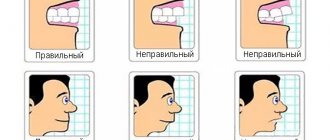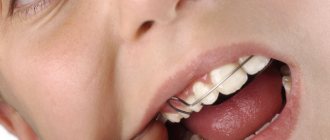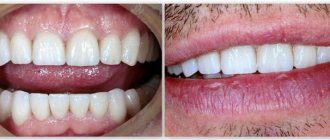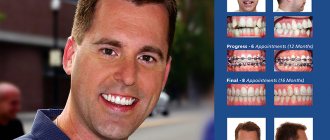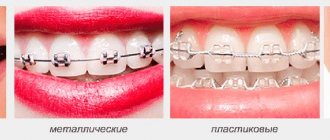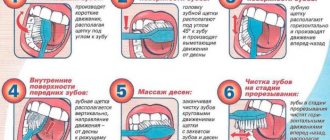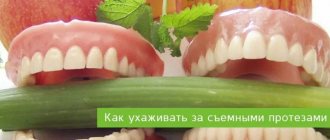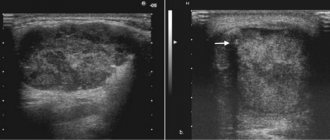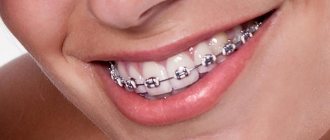When we hear the phrase “ adhesive systems ,” we imagine something complex and not fully understood. And they are increasingly trying to simplify this, reducing the entire system to one jar of homogeneous liquid. Is this necessary? In this article we will find out what place adhesive systems occupy in dentistry.
Dental composite materials do not have independent adhesion to tooth tissue; this requires an intermediary that will provide strong adhesion. It is for this reason that we resort to these “adhesive systems”. Adhesive systems are a very important link between restoration and tooth tissue, so it is very important to understand what they consist of, how they work and what they are “not eaten with”.
Because enamel and dentin have a completely different structure, and the adhesive systems for them are different.
Enamel bonding agents (enamel adhesives) consist of low-viscosity monomers of composite materials, which, due to micromechanical adhesion, ensure adhesion to tooth enamel. Enamel adhesives are hydrophobic, so before applying them, the enamel must be thoroughly dried (should be matte, chalky white). It should be noted that these adhesives do not provide adhesion to dentin, so it is necessary to either isolate the dentin from toxic effects with an insulating lining, or use an adhesive system for dentin (primer).
Adhesive systems for dentin
Ensuring good adhesion of a hydrophobic material to a hydrophilic one is quite a difficult task, which they have been trying to solve for many years. In a fairly short period of time, several generations of adhesive systems for dentin have changed, with development going in two directions - simplifying the procedure for use and improving the adhesion itself. But we all know that simple and high quality are far from synonymous. The term “generation” does not, by and large, have any scientific basis; nevertheless, it allows us to structure in a certain way the whole variety of adhesive systems present on the market today. Belonging to a particular generation is determined by the chemical composition, mechanical adhesion indicators and ease of use.
1st generation adhesive systems
The first generation of adhesive systems has fairly strong adhesion to enamel, but minimal adhesion to dentin. The adhesion mechanism is carried out due to the interaction of calcium, which is part of the teeth, and the bond. After some time, postoperative sensitivity appeared, because the restoration in the dentin was “dangling”, holding on to the enamel with all its might. These generation adhesive systems have been recommended for use with Class III and V cavities only.
2nd generation adhesive systems
The main difference between the second generation adhesive system and the first is that this adhesive will interact with the smear layer, which was not previously involved. But this improvement only helped to slightly increase the period of stay of the restoration in the oral cavity. Postoperative sensitivity was still observed and about one third of the restorations required replacement after a year.
3rd generation adhesive systems
After some time, scientists were able to develop a two-component adhesive system that ensured adhesion of the composite to both enamel and dentin (adhesion values of 8-15 MPa), but apparently it was still not good enough. Postoperative sensitivity decreased significantly, the service life of the restoration increased, but most restorations required replacement after 3 years.
4th generation adhesive systems
4th generation adhesive systems were quite a big leap in the entire history of adhesive systems and are still the “gold standard”. As I said, simple and high quality are far from synonymous. Postoperative sensitivity decreased even more, and the adhesion rate doubled. The technique of total etching and wet dentin bonding appeared for the first time. These adhesive systems owe much to the hybrid layer that forms between the dentin and the composite. After etching, the adhesive interacts with the collagen fibers of dentin, penetrating the dentinal tubules and forming an intermediate layer that is neither dentin nor adhesive, which is called hybrid.
The main disadvantage of these systems is the difficulty of use, because All the necessary components (there are three of them) must be mixed in precise proportions. It was due to these inaccuracies that problems arose when using these systems.
As we have already said, these adhesive systems contain 3 components:
1) Conditioner (phosphoric acid in the form of a gel for etching enamel and dentin);
2) Primer (a mixture of hydrophilic low molecular weight compounds that penetrate wet dentin, saturate it and form a hybrid layer);
3) Enamel adhesive system (unfilled resin that ensures the bond of the composite with the hybrid layer and tooth enamel).
Stages of working with 4th generation adhesive systems Type 1:
Provides for cleaning only enamel.
- Etching the enamel surface for 20-30 seconds using 37% phosphoric acid, which is part of the etching gels;
- Removing the etching gel with a stream of running water for 20-30 seconds (you need to wash it off for the same number of seconds as you etched it).
- Drying the enamel and controlling the quality of the etching (etched enamel has a matte tint);
- Applying primer to the dentin of the carious cavity using an applicator (exposure 10 seconds);
- Distribution of the primer using a weak stream of air (in this way, excess is removed and the primer penetrates more deeply into the dentinal tubules).
- Introducing the enamel adhesive system into the carious cavity using an applicator (applied to prepared enamel and dentin);
- Distribution of the enamel adhesive system using a weak air stream;
- Photopolymerization of adhesive and primer;
- Addition of composite material.
Type 2:
Provides for complete dissolution of the smear layer by etching dentin with phosphoric acid.
Stages of working with 4th generation adhesive systems Type 2:
- Etching the enamel surface for 15 seconds using 37% phosphoric acid, which is part of the etching gels, adding the gel to the dentin for 15 seconds;
- Removing the etching gel with a stream of running water for 30 seconds;
- Drying enamel and dentin (quality control of etching - etched enamel has a matte tint, dentin should not be overdried - moist, shiny);
- Applying primer to the dentin of the carious cavity using an applicator (exposure 10 seconds);
- Distributing the primer using a gentle stream of air;
- Introducing the enamel adhesive system into the carious cavity using an applicator (applied to prepared enamel and dentin);
- Distribution of the enamel adhesive system using a weak air stream;
- Photopolymerization of adhesive and primer;
- Addition of composite material.
1.Etching process:
Etching dentin for too long can result in an etch space that is too deep to allow the adhesive resin to penetrate the full etch depth into the healthy tooth structure.
The maximum depth is approximately 2 – 2.5 microns; Etching deeper creates voids, which can lead to loose bonds or tooth sensitivity. What to do: Use an etching solution with limited penetration depth. Etching with Ultra-Etch is self-limiting to a depth of approximately 1.9 microns, even if the solution is left on the treated surface for longer than the recommended 20 seconds. Dentin consists of organic and inorganic matter. Etching (in blue) exposes the organic collagen fibers to active agents. An ideal etchant penetrates only to a depth that the adhesive agent can then penetrate the tooth structure (highlighted in yellow).
"Over-etching" of dentin results in the collagen fibers being exposed too deeply. As a result, the adhesive agent cannot fully penetrate the fibers, leaving behind cavities that can reduce bond strength and cause tooth sensitivity.
5th generation adhesive systems
In the 5th generation adhesive systems, the mixing problem was eliminated - the “one bottle” concept was implemented, i.e. the adhesive and primer were placed in one container (they became one-component).
The use of one-component systems also involves total etching of enamel and dentin. The mechanism of their connection is similar to the mechanism of adhesion of 4th generation systems. These materials have good adhesion rates to enamel, dentin, ceramics and metal (at the level of 20-25 MPa), but their most important advantage is the absence of the component mixing stage, the poor performance of which led to a decrease in adhesion rates in fourth-generation systems.
Fifth generation adhesive systems are still the most popular because they are easy to use and give predictable results. Postoperative sensitivity when using them is also low. But the strength of adhesion, whatever one may say, is worse than that of our “gold standard” - the fourth generation.
Principles of working with adhesive systems
There are no special principles for working with adhesive systems, unlike the previous ones, but still consider
I understand that this should be stated.
- Etching the enamel surface for 15 seconds using 37% phosphoric acid, which is part of the etching gels, adding the gel to the dentin for 15 seconds;
- Removing the etching gel with a stream of running water for 30 seconds;
- Drying enamel and dentin (quality control of etching - etched enamel has a matte tint, dentin should not be overdried - moist, shiny);
- Application of the adhesive system to the enamel and dentin of the carious cavity using an applicator (exposure 15 seconds);
- Distribution of the adhesive system using a weak air stream;
- Photopolymerization of the adhesive system;
- Addition of composite material.
6th generation adhesive systems
The next task of developers when improving adhesive systems was the need to remove the etching stage from the list of procedures performed. In sixth generation systems this problem has been solved.
Generation 6 adhesive systems are one-step, self-etching systems that come in 2 bottles and require mixing immediately before use. The system is then applied to the enamel and dentin. At the same time, etching, diffusion into the tooth tissue and the formation of a hybrid zone are ensured.
Compared to adhesive systems of the 4th and 5th generations, they are easier to use, working with them requires less time due to the reduction in the number of steps, and the risk of technical errors is reduced.
However, adhesion to dentin (18-23 MPa) remains virtually unchanged over time, while adhesion to enamel deteriorates.
Stages of working with 6th generation adhesive systems:
- outside the oral cavity, the components of the adhesive system are mixed (inside a disposable package or in a special cell);
- applying the adhesive system to the enamel and dentin of the carious cavity using an applicator (exposure 15 seconds);
- distribution of the adhesive system using a weak air stream;
- photopolymerization of the adhesive system;
- introduction of composite material.
Types of adhesives
Enamel adhesive is a hydrophobic solution that, due to micromechanical adhesion, ensures adhesion of the composite surface to the surface of the enamel or primer (Synonym: bond).
Dentin adhesive is a hydrophilic solution that, due to micro- and nanoretention, ensures adhesion of the composite to the dentin surface (Synonym: primer).
Enamel-dentin adhesive is a solution capable of firmly attaching to both enamel and dentin (Synonyms: adhesive or bonding systems, adhesion activators).
Objectives of adhesive systems
Ensure tight, gapless contact of the filling material with the hard tissues of the tooth
Prevent the penetration of microorganisms and dyes along the filling-tooth border in the direction of the pulp chamber
Provide a strong connection to hard tissue, thereby eliminating the need for additional retention points and unnecessary removal of hard tissue
4.Blowing with air and drying:
Excessive thinning of the adhesive layer through swelling leads to the formation of an oxygen-inhibited layer, which does not allow for high-quality polymerization. If the adhesive layer is too thick, it may still contain solvent. What to do: Apply a thick layer of adhesive - the main part of the liquid is the solvent, which must evaporate. Dry the material with a light, continuous stream of air rather than a strong, short blast of air. Follow the manufacturer's recommendations for timing.
Damaged product:
In many cases, fillings fail because they used expired or evaporated adhesive.
What to do: Do not use expired products and follow the manufacturer's storage instructions. After using the contents of the bottle, immediately put the cap on it, otherwise the solvent will evaporate and the material will become unusable before the expiration date. This problem can be avoided if a syringe-release adhesive is used. Return to list
